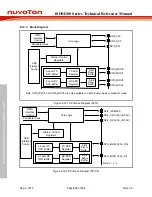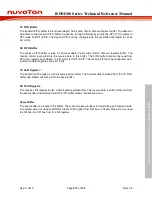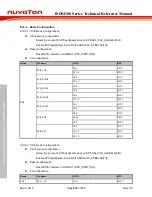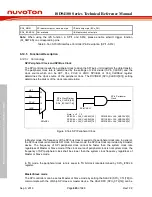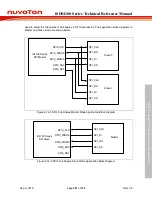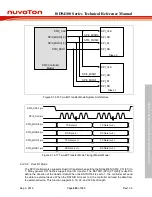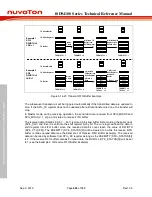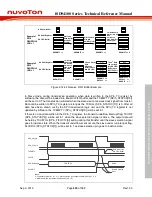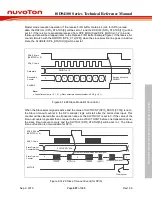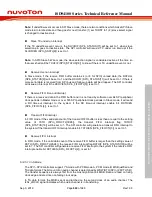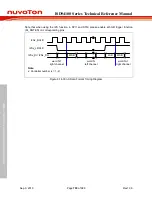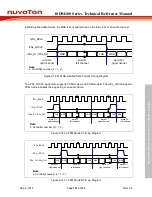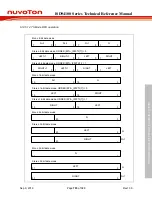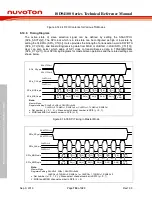
ISD94100 Series Technical Reference Manual
Sep 9, 2019
Page
689
of 928
Rev1.09
IS
D
9
410
0
S
ER
IE
S
T
E
C
HN
ICA
L
RE
F
E
RE
NCE
M
AN
U
AL
SPI0_CLK
SPI0_MISO[1:0]
SPI0_MOSI[1:0]
SPI_CLK
SPI_DO
SPI_DI
SPI_SS
SPI_CLK
SPI_DO
SPI_DI
SPI_SS
SPI0_MISO0
SPI0_MISO1
SPI0_MOSI0
SPI0_MOSI1
SPI0_SS0/1
SPI0 Controller
Master
Slave 0
Slave 1
Figure 6.14-16 Two-Bit Transfer Mode System Architecture
SPI0_CLK pin
SPI0_SS0/1 pin
TX Data (n)
SPI0_MOSI0 pin
SPI0_MISO0 pin
SPI0_MOSI1 pin
SPI0_MISO1 pin
TX Data (n+2)
RX Data (n)
RX Data (n+2)
TX Data (n+1)
TX Data (n+3)
RX Data (n+1)
RX Data (n+3)
Figure 6.14-17 Two-Bit Transfer Mode Timing (Master Mode)
6.14.5.9 Dual I/O Mode
The SPI0 controller also supports Dual I/O transfer when setting the DUALIOEN (SPI0_CTL[21]) to
1. Many general SPI flashes support Dual I/O transfer. The DATDIR (SPI0_CTL[20]) is used to
define the direction of the transfer data. When the DATDIR bit is set to 1, the controller will send
the data to external device. When the DATDIR bit is set to 0, the controller will read the data from
the external device. This function supports 8, 16, 24, and 32 bits of length.


